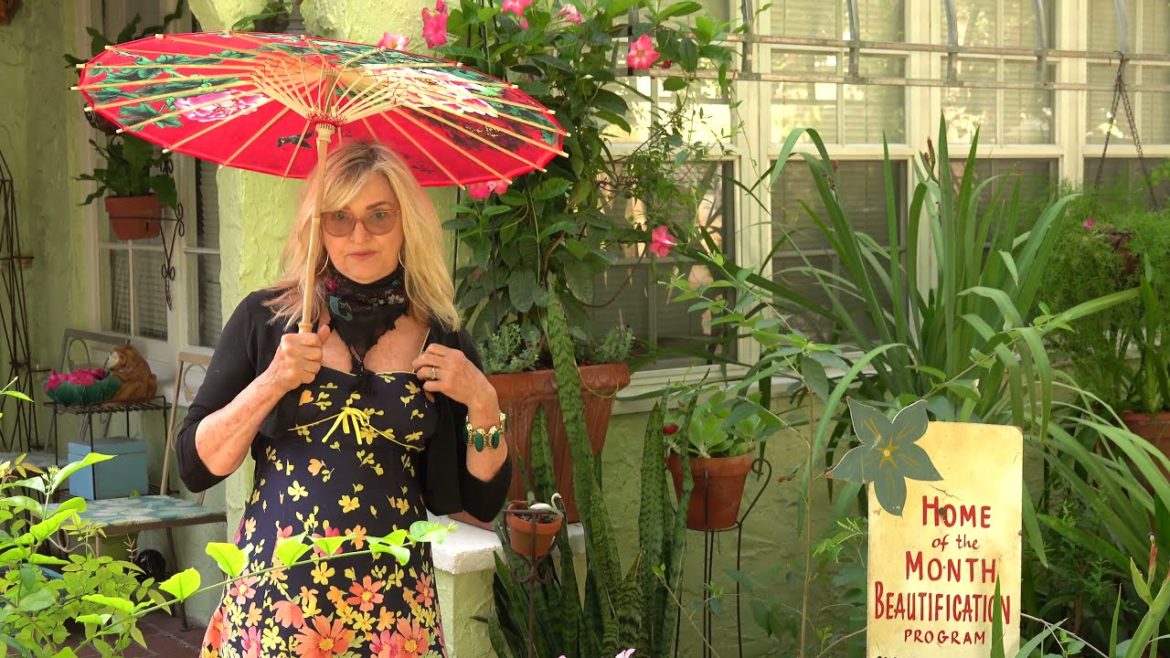Anni Ellis Garden Design, Inc.
https://www.facebook.com/AnniEllisGardenDesignInc
0:45 Home Garden Design
1:10 Sweet Almond Bush
1:19 Jasmine
1:28 Turmeric and False Cardamom
2:27 Rain Lily’s
3:25 Apostle Iris
3:38 Creeping Charlie
4:02 Amaryllis
4:30 Foxtail Ferns
5:12 Lakeview Jasmine
5:39 Oak-leaf Hydrangea
It’s important to have fragrance, shape and color at entries.
Sweet Almond bush, Jasmine and false cardamom (AND Turmeric) provide lovely scents as you walk up to an entrance.
Colors that compliment AND contrast adds depth of interest along pathways and inside flower beds. Pink Rain Lilies, purple Apostle Iris, Amaryllis, Oak-leaf Hydrangea add to the contrasting colors. Creeping Charlie and Foxtail ferns add green textures. Lakeview Jasmine develops into a small tree that blooms a strong orange blossom scented flower many times throughout the year for nearly constant aromas..
Write about the above mentions HERE:
Anni Ellis has been designing gardens professionally for over 25 years. She has created hundreds of gardens in the Tampa, Florida area as well as Austin Texas, Laguna Beach California, the big island of Hawaii and Mobile Alabama. Her background is fine art and had success in several artistic fields before creating this design business, Anni Ellis Garden Design Inc. She has been written up in several local newspapers and magazines, spoken as an expert on radio and public forums ,She is a member of the garden club Rose Circle and serves as Grounds Chairman at the Tampa Garden Club located on Bayshore Blvd. in South Tampa. She volunteers her expertise by donating skills to deserving charities also freely shares her knowledge on many online gardening venues.She creates beautiful large properties along with small organic garden design and installations. Food forests to backyard pools, patios, pots and pergolas with everything in between.
Although Anni continues to professionally design and install all exterior hardscapes and decorative gardens, her focus has turned towards organic edible gardening.At her own home, her small landscape has evolved into self built soils and rejection of chemical fertilizers, herbicides and pesticides. This is done by using heavy mulch with wood chips (gleaned from tree trimming services) to control weeds, amending soil with organically formed composts,(homemade natural fertilizer), encouraging mycelium spread ( good fungus bacteria), and using no pesticides ( not even soap).It took 3 years of patient soil building and just trimming back any disease or insect infestations. Now it’s a self supporting ecosystem and takes care of itself by allowing the predatory bugs to keep the pests under control and reduces any human interference.
In this organic garden, different levels of edibles provide year round beauty with food to eat and share. For height, Papaya, Starfruit, Mango, Fig, Peach, Olive, Mulberry and Loquat trees produce fruit each season. Second layer is Cassava, Pigeon peas, Pineapples (2 varieties),Tomatoes (4 varieties), chaya, spinach (4 varieties), eggplants, peppers and blackberries. Annuals of mustards, collards, turnips, broccoli, onions, corn, lettuces, pumpkin, squash, watermelon and strawberries. Don’t forget the pollinator flowers ( most are edible too)of which some include, roses, spiderwort, , marigolds, nasturtiums, sunflowers, pentas, zinnias, rudbekia, day lilies, aloe veras and many wildflowers. Herbs are everywhere and include basil ( 5 varieties), rosemary, several mints, parsley, cilantro, lemongrass, sage and verbena.
The structured landscape still stands with oaks trees, palms, lagustrums, gardenias, bouganvillea, Iris, orchids, ferns, anthurium, begonias and too many succulents to mention.
It’s all inter planted to discourage a monoculture system. Nothing dominates singularly so they compliment each other. With using these methods, it contributes to the whole health of each plant. By utilizing these old ways of companion planting and organically building soils we fit in and don’t fight what good is already there.
During this 2020 year of isolation many have found different kinds of productive gardening trends. Those that have, are realizing by being in the garden it brings us closer to nature. We also know confidently how the food we grow and eat is produced.
It all seems to be reminding us of how working together with what’s always been provided makes our lives better in every way.
Being a gardener or just being in a garden, has a way of bringing out the best in us all.


2 Comments
I really enjoyed your video! Looking forward to see what is next!
Nicely done, Anni!